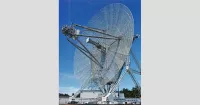Silicon (Si), element 14, is a hard, brittle, blue-grey, tetravalent non-metal and semiconductor crucial in various applications. Its relatively unreactive nature, significant band gap, expansive optical transmission range and effective anti-reflection coating makes it the predominant semiconductor material in electrical devices, including transistors, solar cells, and integrated circuits. Silicon is also important in physiological and metabolic processes in plants.
1901: Bose's Radio Crystal Detector
In 1901, Indian physicist Jagadish Chandra Bose developed a radio crystal detector using galena.
1906: Pickard's Silicon Semiconductor Device
In 1906, American engineer Greenleaf Whittier Pickard developed the first silicon semiconductor device, a silicon radio crystal detector.
1940: Discovery of p-n junction and photovoltaic effects
In 1940, Russell Ohl discovered the p–n junction and photovoltaic effects in silicon.
1941: Development of high-purity germanium and silicon crystals
In 1941, techniques were developed for producing high-purity germanium and silicon crystals for radar microwave detector crystals during World War II.
1947: Shockley's Field-Effect Amplifier Theory
In 1947, physicist William Shockley theorized a field-effect amplifier made from germanium and silicon, but he failed to build a working device.
1954: Fabrication of the first silicon junction transistor
In 1954, physical chemist Morris Tanenbaum fabricated the first silicon junction transistor at Bell Labs.
1955: Discovery of Silicon Dioxide Growth
In 1955, Carl Frosch and Lincoln Derick at Bell Labs accidentally discovered that silicon dioxide (SiO2) could be grown on silicon.
1957: First manufactured SiO2 semiconductor oxide transistor
By 1957, Carl Frosch and Lincoln Derick published their work on the first manufactured SiO2 semiconductor oxide transistor, representing the first planar transistors.
2010: Isolation of Silicene
In 2010, silicene, a new allotrope form of silicon, was isolated.
2013: Polycrystalline Silicon Production Projection
By 2013, polycrystalline silicon production, used mostly in solar cells, was projected to reach 200,000 metric tons per year.
2019: Semiconductor Market Statistics
In 2019, networks and communications devices accounted for 32.4% of the semiconductor market segment.
2027: Semiconductors Industry Projection
By 2027, the semiconductors industry is projected to reach $726.73 billion.
Trending

2 months ago Travis Scott's Epic Johannesburg Performance: Fans Brave Weather for Unforgettable Show

6 months ago Immanuel Iheanacho, a five-star OT, narrows down top schools, including LSU Tigers.
17 days ago Dylan Raiola Transfer Rumors Surface; Brother Decommits from Nebraska, Future Uncertain

24 days ago Bitwise Launches XRP ETF Amidst Market Activity; XRP Staking Explored.
2 months ago Kansas Jayhawks face UCF Knights: Sorsby's performance crucial in Big 12 matchup.
Jaylen Warren is a professional American football running back currently playing for the Pittsburgh Steelers in the NFL He had...
Popular

Candace Owens is an American conservative political commentator and author...

Ilhan Omar is an American politician currently serving as the...

XXXTentacion born Jahseh Dwayne Ricardo Onfroy was a controversial yet...

Frederick Christ Trump Sr - was an American real estate...

Oprah Winfrey an American talk show host television producer actress...

Tom Cotton is an American politician and Army veteran currently...

